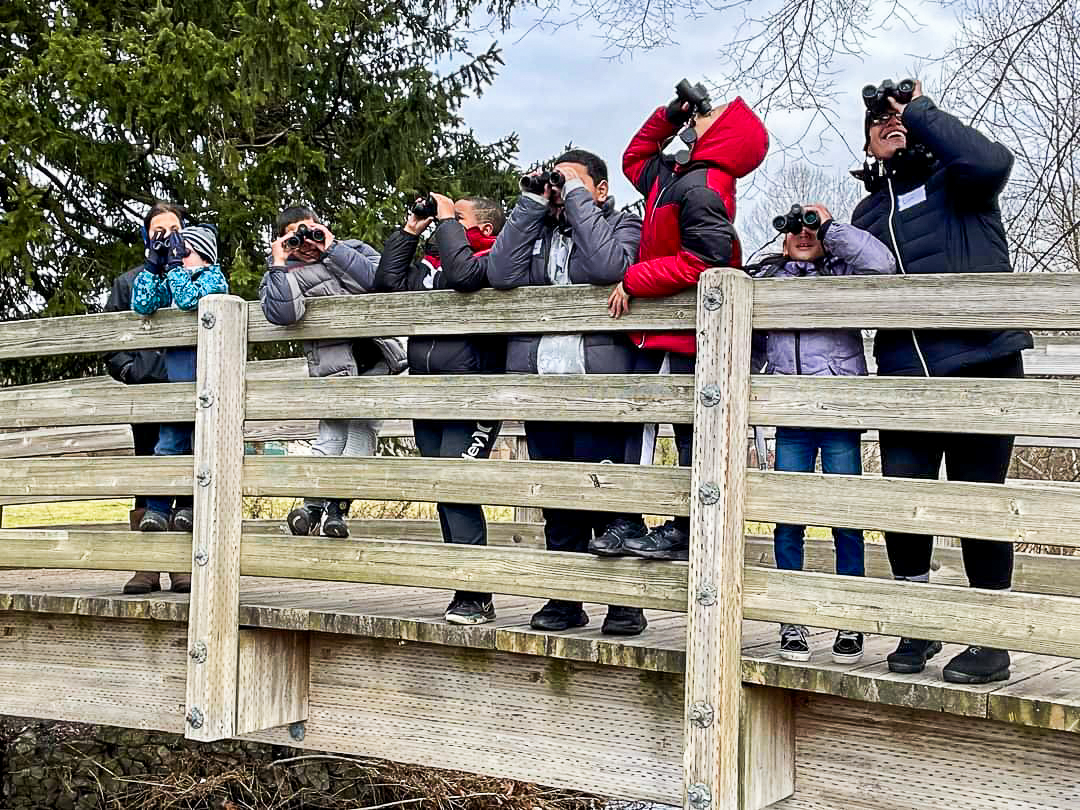Bird lovers across the region flock to the Lehigh Valley Audubon Society for all things bird conservation and education. What started as just a bird-watching society has now evolved into a widespread community outreach program, aiming not just to observe birds, but to protect and advocate for them, too.
According to President Peter Saenger, the society’s beginnings trace back to 1947, when a Muhlenberg College professor organized the Allentown Birding Club. Thirty years later, that same group became a fully-fledged chapter of the National Audubon Society.
“When I got involved it was strictly birdwatching trips,” said Saenger, who joined the society in 1996. “Then we started doing a little bit of public outreach and running programs to teach people about birds.”
“We’ve really become a national powerhouse, which is unique,” he continued, emphasizing that the chapter, with around 300 total members, is quite small compared to others.
The society’s most active committees – the education committee and the habitat committee – directly address a growing need for more conservation and advocacy efforts, according to Barbara Malt, the group’s vice president.
“As we all watch our bird populations decline and come under a lot of different threats, I think people who care about birds see more need to try to foster awareness and conservation of community in different ways,” Malt said. “That’s really what our habitat and education committees are all about.”
According to Malt, the education committee organizes events and programs open to the entire local community, from elementary-age kids to the elderly. Notable programs include the Great Backyard Bird Count, the Lehigh Valley Christmas Bird Count and a special program that supplies “birding backpacks” for kids to rent from their local libraries. Additionally, the society often gives open presentations and can be frequently found tabling at different events around the Lehigh Valley.
As infrastructure has expanded throughout the Lehigh Valley, birds have increasingly lost their habitats, according to Colin Monahan, the chair of the society’s habitat committee. A species called the Purple Martin is just one of the many at-risk birds Monahan named.
In their work on the habitat committee, Audobon volunteers have completed a variety of projects, including managing bird trails, installing different kinds of special birdhouses and constructing special towers for the Purple Martins.
“I think that doing those types of projects is the easiest, quickest way to make a positive impact,” Monohan said.
Monahan and Saenger also advised what the average person can do to help in conservation.
“If you have a habitat that allows the bottom of the food chain to be there, you will have the organisms that go higher up in the food chain as well,” Monahan explained. “Focus on one yard at a time, and make the space around you the best that it can be.”
Malt and Saenger both agreed that the society has taken a special focus on involving local youth over the past few years “because we want longevity and to encourage more people to be conservation-oriented,” Saenger said.
“For young people, the future of our environment is going to be in your hands before long,” Malt said. “Someday you’ll be CEO, and you can either be an environmentally-friendly CEO or one who doesn’t care and destroys. So, of course, we want the next generation to really care about the Earth.”
The society ultimately hopes that creating awareness of the importance of birds will encourage people to both appreciate them and act to preserve the environment we share with them.
“If we don’t take care of our planet and the birds die, we either go before they do or shortly after they do,” Saenger said. “They are such critical indicators of environmental health and they are in serious trouble. We need to do something.”























































































































